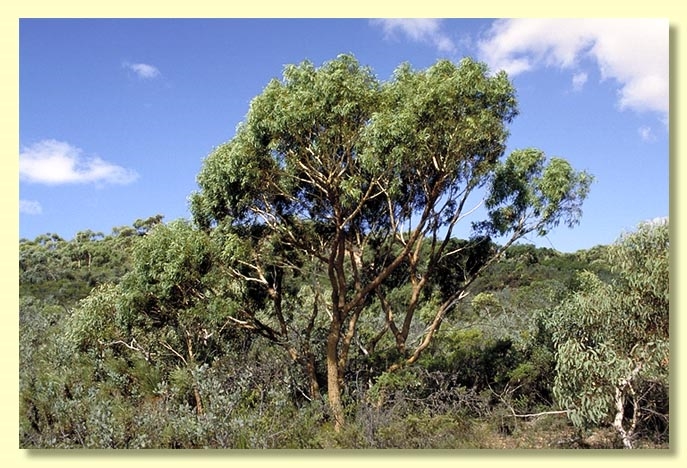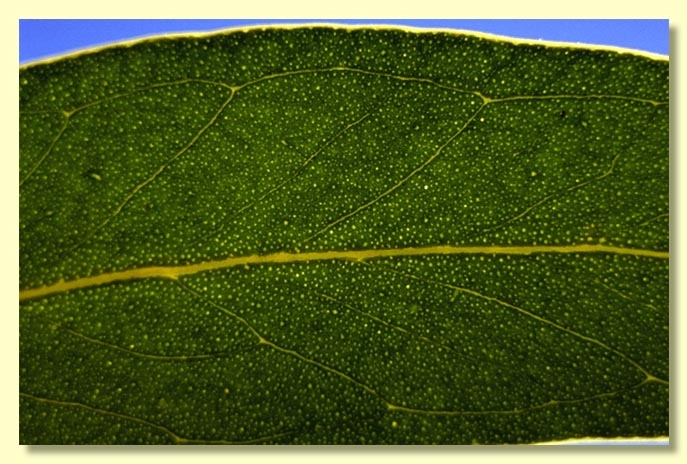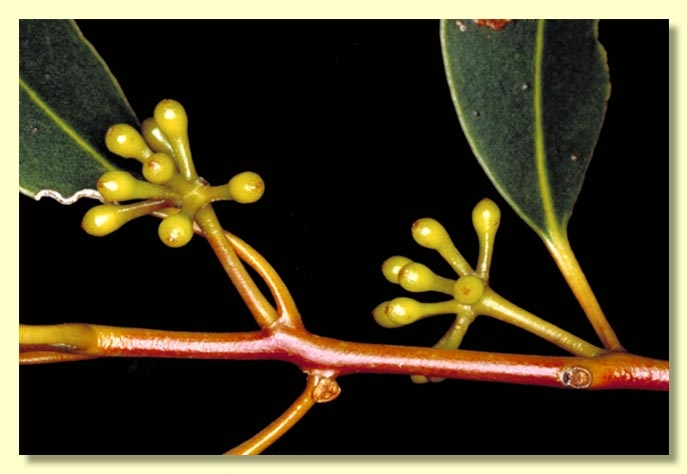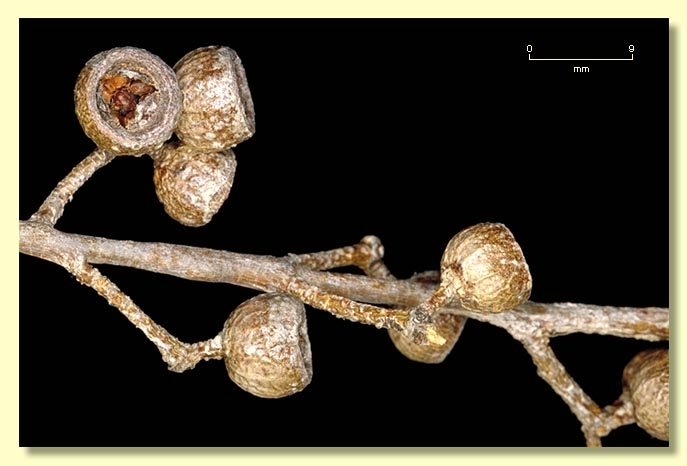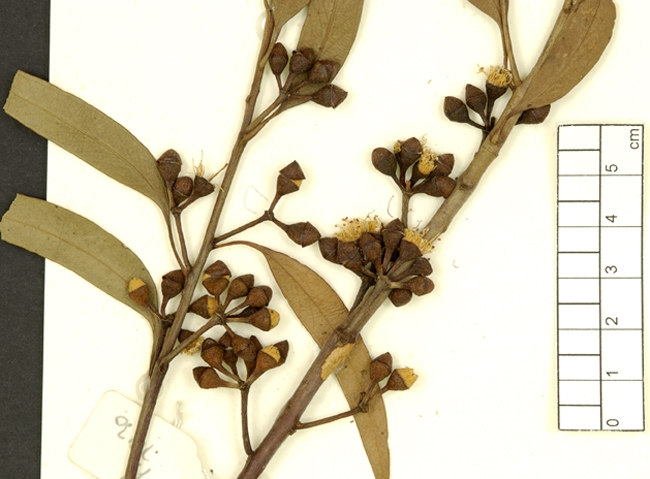Euclid - Online edition
Eucalyptus suberea
Eucalyptus | Eucalyptus | Longistylus | Frutices | Subereae
Bark rough, grey-brown to yellow-brown, at least at base of trunk, often extending over whole trunk, corky or flaky, becomong smooth white, even powdery sometimes, on branches.
Branchlets lacking oil glands in the pith.
Juvenile growth (coppice or field seedlings to 50 cm): stems rounded in cross-section; juvenile leaves shortly petiolate, opposite for ca 10 nodes then alternate, lanceolate, 4–8 cm long, 1–2 cm wide, bluish green to light green.
Adult leaves alternate, petioles 0.6–1.5 cm long; blade lanceolate, 5.5–10 cm long, 0.8–1.7 cm wide, base tapering to petiole, margin entire, apex pointed, concolorous, slightly glossy, green, side-veins at an acute or wider angle to midrib, reticulation sparse or obscure, intramarginal vein remote from margin, oil glands island, numerous, irregular.
Inflorescence axillary unbranched, peduncles 0.6–1.5 cm long, buds 11 to ca 20 per umbel, pedicels 0.2–0.4 cm long. Mature buds ovoid to obovoid, 0.6 cm long, 0.4 cm wide, scar absent, the single operculum conical, most stamens inflexed, a few outer stamens irregularly disposed, anthers oblong, versatile, dorsifixed, dehiscing by longitudinal slits that are not confluent apically, style long and straight, stigma more or less blunt, locules 3, the placentae each with 2 vertical rows of ovules. Flowers white.
Fruit pedicels 0.2–0.6 cm long, truncate-globose, 0.6–0.8 cm long, 0.7–1 cm wide, disc descending, valves 3, rim level or enclosed.
Seeds mid-brown (same colour as the chaff), 2–3.5 mm long, more or less pyramidal to D-shaped, dorsal surface curved, smooth, ventrally angled, hilum terminal.
Cultivated seedlings (measured at ca node 10): cotyledons reniform; stems rounded to square in cross-section; leaves opposite for at least 9 nodes, sessile and amplexicaul until ca node 6 when becoming shortly petiolate, ovate, 5–6.5 cm long, 1.5–3 cm wide, dull, green, base rounded or slightly lobed.
Flowering has been recorded in September.
A small mallee endemic to Western Australia, found only north-east of Jurien in the Gairdner Range extending to the north of Coomallo Hill, with the majority of populations occurring in Lesueur National Park, with one known occurrence on private land. Its habitat is lateritic breakaways and edges of mesas. The bark is rough, flaky, yellow-brown on the lower part of the stems resembling that of the unrelated yellow bloodwoods of eastern Australia. The adult leaves are small, slightly glossy, green and with very little reticulation visible.
Eucalyptus suberea belongs in Eucalyptus subgenus Eucalyptus, where it is the only species in series Subereae, characterised by rough bark, buds erect in clusters of 11 or more, buds with a single operculum (hence no operculum scar), stamens more or less inflexed in bud, anthers that dehisce by completely separate slits, ovules arranged in two rows on the placenta, seeds more or less pyramidal and seedlings with sessile leaves for many nodes, stem-clasping on lower stem then becoming shortly petiolate.
E. suberea often grows near another species in subgenus Eucalyptus, E. lateritica, that has larger leaves, buds and fruit and which generally resembles E. todtiana.
Eucalyptus suberea is listed as "Vulnerable" under the Australian Government Environment Protection and Biodiversity Conservation Act 1999 (EPBC Act). Further information may be found at this web address:
http://www.environment.gov.au/cgi-bin/sprat/public/sprat.pl

